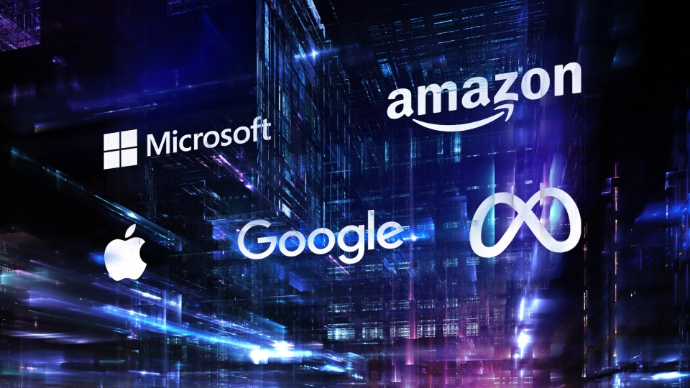Table of Contents
- Summary
- Introduction
- What is Metaverse Development?
- Avatars
- Digital Assets
- Virtual Environments
- Immersive Experiences
- The Role of Developers, Designers, and 3D Artists
- Market Overview of the Metaverse Industry
- Why Develop Metaverse for Your Business?
- Reach a broader Audience
- Enhance Customer Engagement
- New Revenue Streams
- Competitive Advantage
- Testing Ground
- Top Companies Investing in Metaverse
- Tencent
- Roblox
- Microsoft
- Factors Affecting the Cost of Metaverse Development
- Factors Influencing the Cost of Metaverse Development
- Complexity of the Virtual Environment
- Technology Stack
- 3D Asset Creation
- Platform Choice
- Security and Privacy
- Maintenance and Upgrades
- Features for Metaverse Development
- Technology Stack needed to Build Metaverse
- Programming Languages and Frameworks
- Hardware and Infrastructure
- Third-Party Services and Tools
- Scalability and Maintenance
- Composition of the Metaverse Development Team
- Expertise and experience
- Size of the team
- Roles and responsibilities
- Outsourcing and collaboration
- Step-By-Step Development Process for Metaverse
- Step 1: Conceptualization
- Step 2: Design
- Step 3: Development
- Step 4: Testing
- Step 5: Deployment
- Step 6: Maintenance
- Average Cost of Metaverse Development in 2025
- Cost to Develop the Metaverse Industry Wise
- Online Gaming
- Real Estate
- Healthcare
- Social Media
- How Businesses Can Optimize Costs
- Real-World Use Cases of Metaverse Development
- Retail and E-commerce
- Education and Training
- Healthcare
- Entertainment and Gaming
- Why Choose QSS Technosoft for Metaverse Development
- Future Trends in Metaverse Development Costs
- Increased Use of AI
- Growth of Cross-Platform
- Blockchain and NFT Integration
- Cloud and Edge Computing
- Conclusion
- FAQs Section
Summary
The Metaverse is an emerging digital ecosystem where users can interact, transact, and engage in immersive virtual experiences through AR, VR, and blockchain technologies. Understanding development costs is essential for businesses to plan budgets, choose the right features, and ensure project feasibility. Costs vary widely depending on factors like virtual environment complexity, tech stack, 3D assets, platform choice, and team expertise, ranging from $25,000 to over $1 million. Key industries such as gaming, real estate, healthcare, and social media are increasingly leveraging metaverse solutions to enhance engagement, monetize virtual products, and expand their reach. Businesses can optimize costs through modular development, pre-built tools, and collaboration with experienced teams like QSS Technosoft, which offers end-to-end metaverse solutions. Future trends like AI integration, cross-platform interoperability, blockchain, and NFT adoption will shape metaverse experiences while influencing development costs.
Introduction
The term Metaverse refers to a virtual world that is based on physical reality, where people can interact with each other, buy and sell virtual products, play games, and much more. With the rise of virtual and augmented reality, the Metaverse industry is set to grow significantly in the coming years. Metaverse technology is rapidly becoming an essential part of the digital landscape, and businesses are starting to explore the potential benefits of developing a presence in the metaverse.
Understanding metaverse development costs is crucial before investing to ensure budget alignment and project feasibility. It helps businesses make informed decisions about features, technology, and scalability. Proper cost insight minimizes risks and maximizes return on investment in this emerging digital realm.
QSS Technosoft is a trusted partner for metaverse development, offering expert guidance and customized solutions. With a skilled team and transparent processes, QSS Technosoft ensures timely delivery and quality results. Partnering with QSS Technosoft means gaining a reliable ally in your metaverse development journey.
In this blog post, we will explore the overall cost of developing a Metaverse in 2025.
What is Metaverse Development?
Metaverse development involves creating interconnected virtual worlds where users can interact through augmented reality (AR), virtual reality (VR), and blockchain technology. It combines immersive digital spaces with secure, decentralized transactions, enabling rich social and economic experiences.The global Metaverse market is anticipated to grow to approximately $74.4 billion in 2024.Metaverse technologies can provide unprecedented opportunities for remote collaboration, virtual travel, and entertainment.
Avatars
Avatars are digital representations of users within the metaverse, allowing personalized interaction and social engagement. They can be customized to reflect individual identities and emotions, enhancing user presence in shared virtual space
Digital Assets
Digital assets include virtual goods, currencies, and NFTs that users can own, trade, or monetize within the metaverse. Blockchain integration ensures secure transactions and authentic ownership of these virtual items.
Virtual Environments
Virtual environments are the 3D spaces where users explore, interact, and participate in activities. These immersive settings are designed to be realistic or fantastical, offering diverse experiences across multiple worlds.
Immersive Experiences
Immersive experiences combine AR, VR, sound, and interactivity to fully engage users in the metaverse. They create a sense of presence and realism, making virtual interactions feel natural and compelling.
The Role of Developers, Designers, and 3D Artists
Developers build the underlying code and infrastructure, ensuring functionality and scalability. Designers craft intuitive user interfaces and experiences, while 3D artists create the visual assets that bring virtual worlds and avatars to life, collectively shaping the metaverse experience.
Market Overview of the Metaverse Industry
The Metaverse industry has been growing steadily in recent years and is expected to continue to do so in the future. According to a report by Statista, the global Metaverse market is projected to reach $280 billion by 2025. The market is driven by the increased use of virtual and augmented reality technologies, the demand for immersive experiences, and the rise of online gaming. From 2024 to 2030, the Metaverse market is expected to grow at a CAGR of 37.73%.By 2030, the Metaverse market is projected to reach a value of $507.8 billion.Many industries are already planning future operations and investments via the Metaverse.Decentralization in the metaverse allows users to have ownership and control over their digital assets and identities.
Empower Your Digital Vision with an Award-Winning Tech Partner
QSS Technosoft is globally recognized for innovation, excellence, and trusted delivery.
- Clutch Leader in App Development 2019
- Ranked Among Top 100 Global IT Companies
- Honored for Cutting-edge AI & Mobility Solutions
Why Develop Metaverse for Your Business?

The Metaverse offers numerous opportunities for businesses, gamers, and individuals. Here are some reasons why businesses may want to develop a metaverse presence:
Reach a broader Audience
By developing a presence in the metaverse, businesses can reach a broader audience beyond their physical locations. Users from all over the world can interact with the business in the metaverse, potentially increasing the company's reach and customer base.
Enhance Customer Engagement
The metaverse offers a unique and immersive experience for users. Businesses can leverage this by creating interactive experiences that increase customer engagement and drive brand loyalty.
New Revenue Streams
In the metaverse, businesses can monetize their virtual products and services. For example, a fashion brand can sell virtual clothing, and a real estate company can sell virtual properties.
Competitive Advantage
By developing a metaverse presence, businesses can gain a competitive advantage over those that do not. It can position them as innovative and forward-thinking, which can attract customers and investors.
Testing Ground
The metaverse can serve as a testing ground for new products and services. Businesses can test their ideas in a virtual environment before launching them in the physical world.
Overall, developing a metaverse presence can offer numerous benefits for businesses. However, it's important to consider the potential challenges and costs associated with developing and maintaining a metaverse presence.
Read Also: How Metaverse Would Transform Web Design & Development in the Future?
Top Companies Investing in Metaverse

The Metaverse industry has been growing rapidly, with many top companies investing in the technology. Here are some of the top companies investing in the Metaverse:
Facebook has been investing heavily in the Metaverse industry, with CEO Mark Zuckerberg calling it the “next generation of the internet.” The company has launched a Metaverse product called Horizon Workrooms and has also acquired several Metaverse startups, including BigBox VR and Ready at Dawn. Additionally, Facebook continues to develop its metaverse platform to enhance user experience and expand its virtual reality space.
Tencent
Tencent, the Chinese tech giant, has been investing in the Metaverse industry through its gaming division. The company has launched several Metaverse-related projects, including a virtual concert and a virtual mall.
Roblox
Roblox is a popular gaming metaverse platform that has been expanding into the Metaverse industry. The company has launched a Metaverse product called Roblox Metaverse and has also partnered with several companies to create virtual experiences.
Microsoft
Microsoft has been investing in the Metaverse industry through its gaming division and has launched a Metaverse product called Mesh. The company has also partnered with several Metaverse startups, including AltspaceVR and Altspace.
These top companies are leading the way in Metaverse app development, and their investments in the technology are a clear sign of the industry's potential for growth and innovation.
Read Also: Metaverse Trends to Watch out for in 2023
Factors Affecting the Cost of Metaverse Development

Several factors influence the cost of developing a Metaverse.
Factors Influencing the Cost of Metaverse Development
Complexity of the Virtual Environment
The complexity of the virtual environment significantly affects development costs. Simple virtual worlds with basic interactivity require fewer resources, while highly interactive and expansive metaverse environments demand more advanced programming and design. The level of detail, physics, and user engagement features all contribute to increased expenses.
Technology Stack
The choice of technology stack plays a crucial role in determining the overall cost. Incorporating cutting-edge technologies such as augmented reality (AR), virtual reality (VR), blockchain, artificial intelligence (AI), and cloud infrastructure adds complexity and requires specialized expertise. These technologies enhance the metaverse experience but also increase development time and budget.
3D Asset Creation
Creating 3D assets involves designing digital objects, avatars, and environments that populate the metaverse. The quality, quantity, and degree of customization of these assets directly impact costs. High-quality, detailed models with unique customization options require more time and skilled artists, raising the development expenses.
Platform Choice
The platform development on which the metaverse operates influences cost considerations. Developing a standalone app, VR headset experience, or web-based metaverse each has different technical requirements and complexity. VR platforms often require more sophisticated hardware integration, while web-based solutions may focus more on accessibility and scalability.
Security and Privacy
Ensuring robust security and privacy is essential in metaverse development. Implementing data protection measures, secure transaction protocols, and blockchain integration to safeguard digital assets adds to the development workload. Maintaining user trust through secure environments is critical, but can increase both initial and ongoing costs.
Maintenance and Upgrades
Ongoing maintenance and regular upgrades are necessary to keep the metaverse functional and up-to-date. Continuous support includes fixing bugs, enhancing features, and adapting to new technologies. These activities require dedicated resources and budget allocation beyond the initial development phase to ensure a successful metaverse experience.
Features for Metaverse Development
The features of a metaverse can have a significant impact on the cost of developing it. The more advanced and feature-rich a metaverse is, the more expensive it will be to develop. User-generated content (UGC) is critical in fostering a vibrant community within the metaverse.Some key features that can affect the development cost include:
- Size and complexity of the virtual world: The larger and more complex the virtual world, the more expensive it is to develop. This is because more resources are required to create the various elements and ensure they interact seamlessly.
- Level of interactivity and user customization: If the metaverse allows for a high degree of interactivity and user customization, it will require more development time and resources to ensure these features work smoothly.
- Graphics and immersive elements: The more advanced the graphics and immersive elements of the metaverse, the more expensive it will be to develop. This is because high-quality graphics and immersive elements require more powerful hardware and software.
- Connectivity and scalability: If the metaverse is designed to accommodate a large number of users and support multiple devices and platforms, it will require more development resources to ensure it is scalable and can handle the necessary connectivity.
- Security and privacy: Developing a metaverse with robust security and privacy features can be costly due to the need for advanced encryption and security protocols.
Read Also: How Much Does it Cost to Build a Mobile App?
Technology Stack needed to Build Metaverse

The tech stack required to build a metaverse can have a significant impact on the cost of development. The choice of tech stack depends on the features and functionality required for the metaverse. Here are some ways in which the tech stack can affect the cost of development:
Programming Languages and Frameworks
Different programming languages and frameworks have different learning curves and require different levels of expertise. Using popular and widely supported languages and frameworks can reduce development costs by making it easier to find skilled developers and resources.
Hardware and Infrastructure
The hardware and infrastructure required to build a metaverse can be a significant cost factor. High-quality graphics, processing power, and networking infrastructure can be expensive.
Third-Party Services and Tools
The use of third-party services and tools can add to the development cost, but they can also help save time and reduce the complexity of building a metaverse. For example, using pre-built modules or engines can save time and resources.
Scalability and Maintenance
The tech stack chosen for a metaverse should be scalable and maintainable. This means that it should be able to handle increased traffic and feature updates without significant downtime or disruption. Using scalable technologies may require a higher upfront cost but can save on maintenance and support costs in the long run.
However, selecting the right tech stack for the desired features and functionality can also help ensure the success and sustainability of the metaverse.
Composition of the Metaverse Development Team

The size and composition of the team required to develop a metaverse can have a significant impact on the overall development cost. The team size and composition depend on the complexity of the metaverse and the required features and functionality. Here are some ways in which the team required to develop a metaverse can affect the overall development cost:
Expertise and experience
The expertise and experience of the development team can have a significant impact on the app development cost. Highly skilled and experienced developers can work more efficiently and effectively, reducing the time and cost required to develop the metaverse.
Size of the team
The size of the development team required to build a metaverse can vary greatly depending on the complexity of the project. A larger team may require more resources and time, but it can also help ensure the project is completed on time and to a high standard.
Roles and responsibilities
The roles and responsibilities of the development team can also affect the overall cost of development. For example, a team with dedicated designers, developers, and testers may be more efficient and effective than a smaller team with fewer specialized roles.
Outsourcing and collaboration
Outsourcing certain aspects of the development process can help reduce the overall development cost. However, it can also increase the complexity of the project and require additional resources for coordination and communication.
Overall, the size and composition of the development team required to build a metaverse can significantly impact the overall development cost. A highly skilled and experienced team with specialized roles and responsibilities can help ensure the project is completed on time and to a high standard, but it may require more resources and time
Step-By-Step Development Process for Metaverse
Step 1: Conceptualization
In this stage, the client's requirements are analyzed, and a concept for the Metaverse is developed.
Step 2: Design
The design phase involves creating the Metaverse's user interface, visual style, and experience. This includes creating 3D models, textures, lighting, and sound effects.
Step 3: Development
The development phase involves building the Metaverse software using the chosen tech stack. This includes programming the software, developing artificial intelligence and physics engines, and integrating blockchain technology.
Step 4: Testing
The testing phase involves testing the Metaverse software for bugs, performance issues, and usability. This includes conducting user testing to ensure that the Metaverse meets the client's requirements.
Step 5: Deployment
Once the Metaverse software is fully tested and approved, it is deployed to the client's server or cloud hosting infrastructure.
Step 6: Maintenance
The maintenance phase involves providing ongoing support and maintenance for the Metaverse software. This includes bug fixes, updates, and enhancements to the software to ensure that it continues to meet the client's requirements
Average Cost of Metaverse Development in 2025
The cost of developing a Metaverse can vary widely depending on the project's scale and complexity. Small Metaverse apps typically range from $50,000 to $100,000, suitable for basic virtual environments with limited features. Medium-scale experiences, offering more interactive elements and larger user bases, usually cost between $100,000 and $250,000. Large immersive Metaverse platforms, which include advanced features, extensive virtual worlds, and high scalability, can exceed $250,000.
Factors Affecting Cost | Description | Impact on Cost |
|---|---|---|
Features and Functionality | Complexity and number of interactive elements and assets | Higher features increase cost |
Team Size and Expertise | Number of developers, designers, and specialists involved | Larger, more experienced teams raise costs |
Technology Stack and Tools | Use of advanced tools like blockchain, AR/VR, AI, spatial computing | Cutting-edge tech increases development expenses |
Platform Choice | Target platform such as VR headsets, web, or mobile | More complex platforms require higher investment |
The cost of developing a Metaverse can vary depending on the features you want to include, the tech stack required, and the team's size and experience. Based on our estimation, the cost of developing a Metaverse in 2025 could range anywhere from $25,000 to $1 million.
Cost to Develop the Metaverse Industry Wise
The cost to develop Metaverse software can vary depending on the industry it's being developed for. Here's an overview of the estimated cost to develop Metaverse software in some of the popular industries:
Online Gaming
The estimated cost to develop Metaverse software for the online gaming industry can range from $50,000 to $200,000. This cost can vary depending on the complexity of the virtual environment and the number of players it can support. Virtual land metaverse blockchain development
, which allows players to own and interact with specific areas within the gaming world, can also influence the overall cost.
Real Estate
The estimated cost to develop Metaverse software for the real estate industry can range from $30,000 to $100,000. This cost can vary depending on the complexity of the virtual environment and the number of properties it can showcase.
Healthcare
The estimated cost to develop Metaverse software for the healthcare industry can range from $80,000 to $1 million. This cost can vary depending on the complexity of the virtual environment and the number of medical procedures it can simulate.
Social Media
The estimated cost to develop Metaverse software for the social media metaverse industry can range from $25,000 to $80,000. This cost can vary depending on the complexity of the virtual environment and the number of users it can support.
It's important to note that these estimates are just a rough approximation, and the actual cost to develop social media metaverse software can vary depending on several factors, such as the features required, the tech stack used, and the team's experience.
How Businesses Can Optimize Costs
- Prioritize essential features first: Focus on developing core functionalities that deliver the most value to users, avoiding unnecessary complexity and reducing initial expenses.
- Use modular development for scalability: Build the metaverse in modular components, allowing for easy updates and expansions without overhauling the entire system, saving time and resources.
- Leverage pre-built tools, assets, and frameworks: Utilize existing metaverse development tools and assets to accelerate the development process and cut costs associated with creating everything from scratch.
- Partner with experienced Metaverse development teams like QSS Technosoft: Collaborate with skilled professionals who understand the technology and can provide efficient, cost-effective solutions tailored to your business needs.
Real-World Use Cases of Metaverse Development
Retail and E-commerce
Metaverse development enables the creation of virtual stores where customers can browse and purchase products in a realistic virtual setting. Augmented reality devices allow users to try on clothes or accessories virtually, enhancing the shopping experience. The cost varies based on the complexity of 3D modeling, AR integration, and e-commerce functionalities.
Education and Training
Immersive learning platforms in the metaverse provide interactive and engaging educational experiences, simulating real-world scenarios for better understanding. Virtual classrooms and training modules require advanced features like AI-driven personalization and realistic simulations. Development costs depend on the level of interactivity, content complexity, and scalability.
Healthcare
Metaverse solutions in healthcare include virtual therapy sessions and training simulations for medical professionals, improving accessibility and practical skills. High fidelity and accuracy in simulations are critical, often requiring specialized development and compliance with regulations. Costs reflect the need for precision, security, and integration with existing healthcare systems.
Entertainment and Gaming
The metaverse offers immersive games, virtual concerts, and social hubs that foster community engagement and entertainment within a vibrant virtual space. Complex game mechanics, live event streaming, and real-time social interaction increase development complexity. Costs fluctuate with the scale of the virtual world, interactivity, and integration of blockchain for virtual asset ownership.The Metaverse enables players to win virtual items that can be sold for real money.Online gaming has been a favorite among players for years, especially after the advent of blockchain technology.
Why Choose QSS Technosoft for Metaverse Development
At QSS, we have a team of experienced professionals who specialize in Metaverse development. As a leading metaverse development company, we have a deep understanding of the technology and can help you create a Metaverse that meets your business needs. We offer custom pricing, a transparent development process, and timely delivery. What else? QSS follows an agile development process, which means that we work in sprints, with each sprint delivering a functional part of the Metaverse. This approach ensures that the client is involved in every stage of the development process and that the Metaverse is delivered on time and within budget.
- End-to-end Metaverse solutions: QSS Technosoft offers comprehensive services covering all stages from initial planning and design to development and deployment, ensuring a seamless project flow.
- Expertise in AR/VR, blockchain, AI, and 3D asset creation: The team possesses deep knowledge in crucial technologies, enabling the creation of immersive and secure metaverse environments.
- Focus on scalable, secure, and immersive virtual experiences: They prioritize building metaverse platforms that can grow with your needs while maintaining high security and engaging user experiences.
- Proven track record with businesses of all sizes: QSS Technosoft has successfully delivered metaverse solutions for startups to large enterprises, demonstrating versatility and reliability.
Future Trends in Metaverse Development Costs
Increased Use of AI
Artificial intelligence is becoming a key tool in generating dynamic and personalized content within the metaverse, reducing manual workload. This automation enhances scalability but may initially raise development costs due to AI integration complexity.
Growth of Cross-Platform
The demand for seamless interaction across various devices and platforms is driving the creation of interoperable metaverse environments. Developing these cross-platform experiences requires additional resources, impacting overall costs.
Blockchain and NFT Integration
Integrating blockchain technology and NFTs ensures secure transactions and unique digital asset ownership in the metaverse. While adding value, these features increase development expenses due to their technical complexity and security requirements.
Cloud and Edge Computing
Leveraging cloud and edge computing allows metaverse platforms to deliver low-latency, high-performance experiences to users globally. This approach can lower infrastructure costs over time by optimizing resource usage and scalability.
Conclusion
The Metaverse industry presents a significant opportunity for businesses, individuals, and gamers. Developing a Metaverse requires a deep understanding of the technology and expertise in various fields such as software development, 3D modeling, game design, and project management. The cost of developing a Metaverse can vary depending on various factors, and it's crucial to choose the right team to help you bring your Metaverse to life. Collaborate with QSS Technosoft to build cost-effective, immersive Metaverse experiences
We are proud to mention that our work has been recognized by leading B2B reviews and research platforms like GoodFirms, Clutch, MirrorView, and many more.
Contact us today to learn more about our Metaverse development services.
FAQs Section
1. What is metaverse development?
Metaverse development is the process of creating virtual worlds where users can interact, play, work, and socialize using technologies like virtual reality, augmented reality, and blockchain.
2. How much does metaverse development cost?
The cost varies widely depending on the complexity, features, and technology used. It can range from $25,000 for simple projects to over $1 million for large, complex metaverse platforms.
3. What are digital avatars in the metaverse?
Digital avatars are virtual representations of users that allow them to interact and express themselves in the metaverse. They can be customized to look unique and reflect the user's personality.
4. Why should businesses invest in metaverse development?
Businesses can reach a broader audience, enhance customer engagement, create new revenue streams, gain a competitive edge, and test new products in a virtual setting.
5. What technologies are used in metaverse development?
Key technologies include virtual reality (VR), augmented reality (AR), blockchain for secure transactions, artificial intelligence (AI), and 3D modeling to create immersive virtual environments.
Investing in the Future: The True Cost of Metaverse Development in 2023